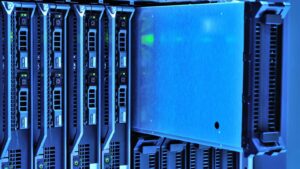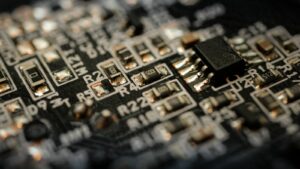”
Key Takeaways
- Operating System Role: An operating system serves as the primary interface that bridges the gap between users and computer hardware, facilitating seamless communication and task execution.
- User Interface Types: There are two main types of user interfaces: Graphical User Interfaces (GUIs), which utilize visual elements for intuitive navigation, and Command-Line Interfaces (CLIs), which allow for precise command input for advanced users.
- Multitasking and Resource Management: Operating systems optimize performance by facilitating multitasking, managing CPU cycles, memory, and storage effectively to ensure smooth execution of multiple applications.
- Security Measures: Operating systems incorporate essential security features to protect sensitive data, manage user permissions, and regularly update to address vulnerabilities, enhancing overall system integrity.
- Impact on User Experience: A well-designed interface significantly affects user experience by making technology more approachable and reducing the learning curve for new users, fostering productivity.
- Examples of Popular Systems: Different operating systems like Windows, macOS, and Linux feature unique interfaces and functionalities that cater to various user preferences and needs, influencing how users interact with their hardware.
In the world of computing, the relationship between users and hardware is crucial for effective interaction. The primary interface that bridges this gap is the operating system, a vital component that enables users to communicate with the computer’s hardware seamlessly. It transforms complex hardware processes into user-friendly actions, allowing individuals to perform tasks without needing to understand the intricate workings of the machine.
Operating systems serve as the backbone of user experience, managing resources and facilitating communication between software applications and hardware components. By providing a graphical user interface or command-line options, these systems empower users to navigate and control their devices efficiently. Understanding this interface is essential for anyone looking to harness the full potential of their computer.
What Is The Primary Interface Between Users And The Computer Hardware In An Operating System
 Operating systems serve as the crucial link between users and computer hardware. They manage hardware resources, such as CPU, memory, and storage, and streamline user interactions with these components. Operating systems interpret users’ commands and convert them into instructions that hardware can execute, simplifying complex operations.
Operating systems serve as the crucial link between users and computer hardware. They manage hardware resources, such as CPU, memory, and storage, and streamline user interactions with these components. Operating systems interpret users’ commands and convert them into instructions that hardware can execute, simplifying complex operations.
Operating systems provide various user interfaces, predominantly graphical user interfaces (GUIs) and command-line interfaces (CLIs). GUIs enable users to interact through visual elements like windows, icons, and menus, making navigation intuitive. CLIs, in contrast, allow users to input commands directly, often resulting in faster execution and resource management.
Operating systems facilitate multitasking, allowing multiple applications to run concurrently while managing system resources effectively. They prioritize tasks and allocate resources to ensure optimal system performance. Moreover, they handle input and output operations, enabling seamless communication between peripheral devices and the central processing unit (CPU).
Security features are integral to operating systems, protecting sensitive data and managing user permissions. They enforce access controls and provide mechanisms for data encryption, ensuring system integrity. Regular updates enhance security and performance, addressing vulnerabilities and improving system functionality.
Understanding the primary functions of operating systems equips users with the knowledge necessary to leverage their computer systems effectively.
Definition of the Primary Interface
The primary interface serves as the crucial link between users and computer hardware within an operating system. This interface facilitates user interaction by translating commands and actions into processes that the hardware can execute.
User Interface Types
User interface types are integral to how users interact with an operating system. The two main types include:
- Graphical User Interfaces (GUIs): GUIs utilize visual elements, such as windows, icons, and menus, to enhance user navigation and accessibility. They encourage interaction through point-and-click methods, making the operating system more intuitive.
- Command-Line Interfaces (CLIs): CLIs require users to input textual commands. They allow for efficient execution of tasks and scripts, providing a powerful tool for advanced users who seek greater control over the system’s operations.
Hardware Interaction
Hardware interaction involves the methods through which the operating system communicates with computer components. Key aspects include:
- Device Drivers: Device drivers are specialized software that facilitate communication between the operating system and hardware devices. They translate OS commands into hardware-specific instructions.
- I/O Management: Input/output (I/O) management handles data exchange between the user, software, and hardware. The operating system manages data transfer, ensuring efficient interaction and resource allocation.
- Resource Management: Resource management encompasses the allocation of CPU cycles, memory, and storage to running applications. The operating system prioritizes tasks to optimize performance and efficiency.
Importance of the Interface
The interface between users and computer hardware is crucial for effective interaction and operation. It significantly impacts user experience and system performance.
User Experience
User experience relies heavily on the interface design. A well-structured graphical user interface (GUI) enhances accessibility through visual elements such as buttons, icons, and menus. This design allows users to navigate software seamlessly, reducing the learning curve for new users. Command-line interfaces (CLI), though less visually intuitive, offer precision and speed for advanced users, enabling efficient command execution. Customization options within these interfaces cater to individual preferences, further enhancing user satisfaction. Ultimately, a user-friendly interface fosters productivity by simplifying complex processes, making technology more approachable for all users.
System Performance
System performance directly correlates with the efficiency of the interface. Operating systems optimize resource allocation through the interface by managing CPU cycles, memory, and storage effectively. High-performance drivers ensure timely communication between the OS and hardware, minimizing latency during data exchange. Additionally, efficient I/O management processes enhance response times, enabling quicker data retrieval and task execution. An optimized interface plays a pivotal role in maintaining overall system performance, allowing users to accomplish tasks swiftly without unnecessary delays.
Examples of Interfaces in Popular Operating Systems
Popular operating systems use various interfaces to bridge users and hardware. The design and functionality of these interfaces significantly influence user interaction.
Windows
Windows operating systems feature a graphical user interface (GUI) characterized by its use of icons, taskbar, and start menu. Users navigate through visual elements, accessing applications and system settings with ease. Additionally, Windows includes a command-line interface called Windows PowerShell, allowing advanced users to execute commands directly for efficient performance and automation tasks. The integration of touch support in recent versions further enhances user experience across devices.
macOS
 macOS employs a refined GUI with a focus on aesthetics and usability. The Dock provides quick access to applications, while Finder serves as the file management tool, simplifying file navigation. macOS also supports a powerful command-line interface called Terminal, enabling users to execute UNIX-based commands. Features like gestures and support for Retina displays enhance user interaction and visual clarity, making tasks intuitive and efficient.
macOS employs a refined GUI with a focus on aesthetics and usability. The Dock provides quick access to applications, while Finder serves as the file management tool, simplifying file navigation. macOS also supports a powerful command-line interface called Terminal, enabling users to execute UNIX-based commands. Features like gestures and support for Retina displays enhance user interaction and visual clarity, making tasks intuitive and efficient.
Linux
Linux offers various desktop environments, each with unique GUIs, including GNOME and KDE Plasma, catering to diverse user preferences. The interfaces prioritize customization and flexibility, allowing users to modify layouts and appearances. Linux also features terminal-based command-line interfaces, empowering users to control systems at a granular level. Open-source nature provides extensive documentation and community support, facilitating an enriched interaction with hardware and software components.
Bolster User Satisfaction And System Performance
The primary interface between users and computer hardware plays a pivotal role in shaping the overall computing experience. By simplifying interactions through GUIs and CLIs, operating systems empower users to navigate complex hardware functions effortlessly. This interface not only enhances accessibility for newcomers but also provides advanced users with the precision they seek.
Effective resource management and security features further bolster user satisfaction and system performance. As technology continues to evolve, understanding the dynamics of this interface will remain essential for maximizing productivity and ensuring a seamless interaction with computer systems.
“

